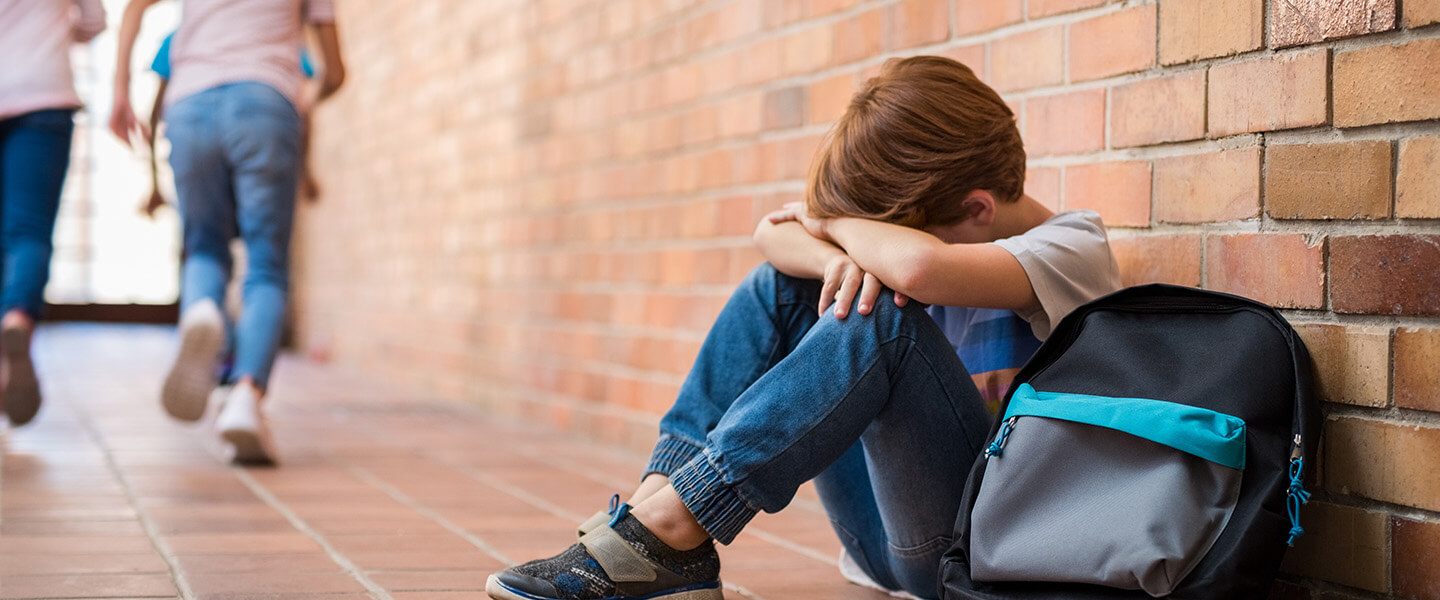A School-Based Intervention to Reduce Bullying and the Psychological Harm It Causes
A School-Based Intervention to Reduce Bullying and the Psychological Harm It Causes

In nations around the globe, systems of primary and secondary education have gradually been making an important transition: from those that traditionally set special-needs children apart (when it served these young people at all) to school systems in which such children are “mainstreamed”—brought into classes to take their place among their peers.
This development has been widely hailed as enlightened, a long overdue lifting of a largely unspoken and too often unacknowledged burden previously placed upon those with special needs. Yet the enlightened approach is “not without risks,” note authors of a newly published paper. Those authors—psychiatrists, psychologists, education professionals and social workers—who report on the results of a novel clinical trial they have conducted, remind us that children with special needs are most often the targets of peer aggression, typically taking the form of bullying. For purposes of the study, “special needs” is defined as having mental or physical health challenges.
Some studies suggest that as many as one person in three experiences bullying at some point in life. Young people, and most of all the very young, in primary school, stand to be hurt most. The reason for this disproportionate impact risk is obvious: the young brain has had the least time to develop; it is least well equipped to comprehend, much less defend against such attack. Past research has shown that bullying and other kinds of childhood adversities are among the most consistent risk factors for development of severe mental disorders.
The research team, led by 2005 BBRF Independent Investigator Celso Arango, Ph.D., of the Gregorio Marañón University General Hospital and the School of Medicine at Universidad Complutense, CIBERSAM, Madrid, Spain, sought to address the question of “whether universally administered school-based anti-bullying programs are effective in [protecting] vulnerable populations such as students with special educational needs (SEN)—or if SEN students require specific interventions.”
“Few studies have focused on bullying behavior on the vulnerable population of children and adolescents with SEN, and even fewer have addressed the efficacy of anti-bullying interventions in this population," Dr. Arango and colleagues say. This despite the fact that the Madrid-led team and prior researchers “have previously shown that childhood adversities such as bullying are among the most [potentially] modifiable risk factors for developing severe mental disorders.”
Evidence from the U.K., the team notes, indicates that young people who were frequently bullied were 2.5 times more likely to use mental health services in childhood and adolescence, compared with young people who weren’t bullied. In their own prior research, the team found “bullying victimization was 4.5 times more likely in students with special education needs.” The association with psychiatric disorders “carries over into midlife, where those bullied as young people had a 30% higher likelihood of using [psychiatric] services than non-bullied peers.” These figures can be presumed to understate the risk bullying poses to future mental health since it is well established that a large portion of people who need mental health support never receive it, whether due to stigma or, in the U.S., lack of access to care.
Dr. Arango and colleagues tested a novel anti-bullying school-based intervention delivered at no charge over the web, involving students in 20 primary and secondary schools (10 each) in 2018 and 2019. Results of the intervention included post-intervention assessments 6403 of 6542 students who received the intervention. The very high percentage indicates the intervention was well accepted and did not prove onerous to those who participated. The intervention lasted 12 weeks. The follow-up analysis was based on responses gathered a year after the end of the trial, a delay due to the advent of the COVID pandemic.
The participating students were divided into two groups. One received the anti-bullying intervention, which focused on reducing discrimination and promoting inclusiveness; the other group experienced what the team describes as “conventional” school practices—i.e., they received no particular education or training about bullying. The anti-bullying training was “multi-modal”: it involved different modules for students randomly assigned to receive anti-bullying training, as well as their teachers and parents. Much of the intervention consisted of education about bullying and its harmful effects. It also sought to raise awareness about the prevalence and present and future impacts of bullying. Among the young people, both victims and perpetrators of bullying were exposed to the training, which addressed the perspectives of each.
The mean age of the children across the trial groups was about 12 (although many were years younger and years older, depending on their grade in school at the time of the trial). They were equally divided among boys and girls. All were from the Madrid area, and about two-thirds were from large, urban schools. About half in each group were from families in the middle or upper-middle income range. A bit less than one-third of the students were in primary school. About 5% of all students in the trial, irrespective of group, had “special educational needs.” About the same percentage were assessed to have been bullied according to reports based on interviews.
The anti-bullying intervention that was tested—which is called LINKlusive, and incorporates significant aspects of a prior intervention tested with some success in Madrid schools—was found to “reduce bullying victimization” in schools enrolling students with special educational needs, the team reported in its paper published in The Lancet. But it had this impact only among students in primary schools enrolling SEP students, not secondary schools.
The team also found that among students who had already been bullied before the study began, “the intervention was associated with a significant decrease in depressive symptoms and improvement in quality of life.” These findings were based on the assessments made a year after the study ended.
The results need to be treated with caution, and must be replicated, the researchers noted. Interestingly, even though the LINKlusive intervention was adapted for delivery to students of different ages, “our results would suggest potential efficacy … only in the younger group,” the team said.
Those who had been bullied before the start of the study were found most likely to benefit, and to have the greatest benefit relative to those who had not been bullied. This suggested to the team that there may be temporal “windows” for prevention in at least this aspect of mental health: when given universally to young students in the primary grades, the intervention was more likely to help those children who had been bullied and more likely to prevent bullying, compared with its effect on adolescents in the secondary grades. This could be because brain development in the older children, while still highly plastic compared with adults, may already be more resistant to modification by an intervention like the one tested in the trial.
“Given the current tendency to integrate students with special needs into mainstream schools and the lack of current interventions to reduce bullying,” the researchers said, their results justify studies aimed at replicating their results. The results also suggest that the intervention they tested, or ones like it, “could be effective” for students of both age groups, both younger and older, if they are targeted to those who were seen to benefit in the trial. “Improvements in depression, feelings of wellbeing and other psychological measures in those exposed to bullying” are the potential gains.



